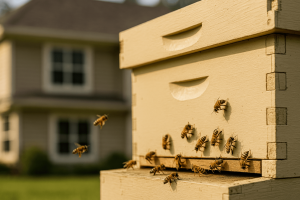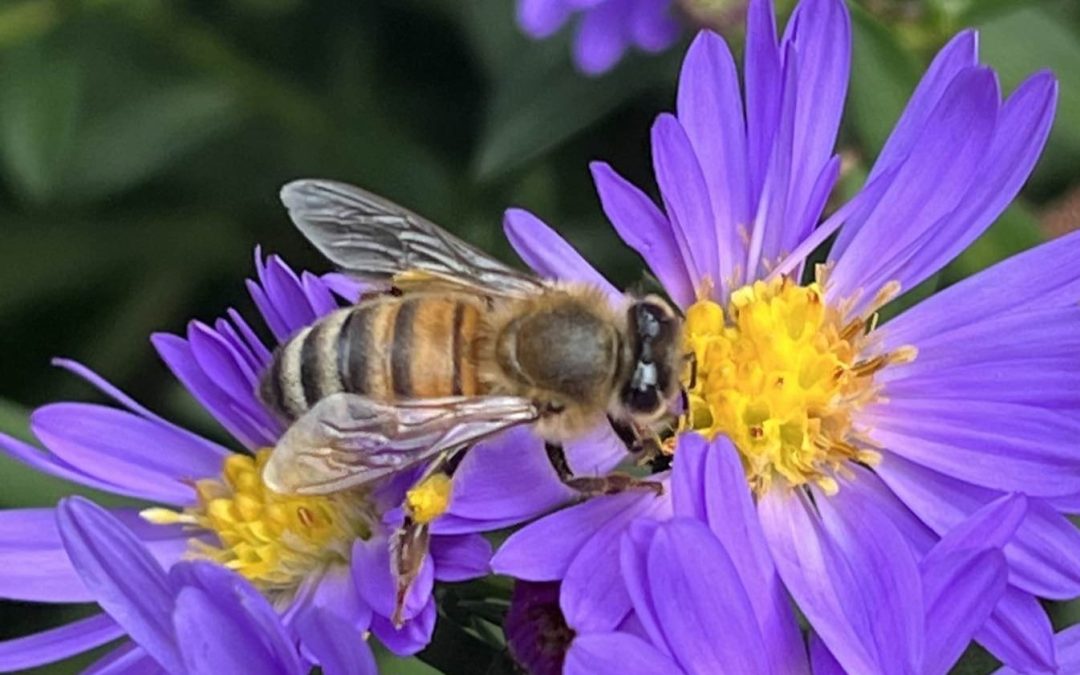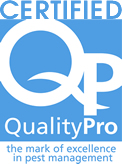If you’re a beekeeper—or even just have a few hives tucked into the corner of your yard—you’ve probably had this question: “Is pest control safe around my bees?” Honestly, it’s a great question, and we’re always glad when someone asks it. Because it means you’re paying attention, and we like working with people who care.
Let’s talk about how pest control can be done responsibly without putting your pollinators at risk.
Key Takeaways
- We always take extra precautions when a client has bee hives on their property.
- Treatments are targeted, not sprayed around flowering plants or near hive entrances.
- We avoid products and practices that are known to harm pollinators.
- If you’ve got hives, let us know—we’ll make a note and plan accordingly.
Understanding the Risk to Bees
Most of the concern about bees and pesticides comes from commercial agriculture, where large-scale spraying and crop dusting can absolutely impact pollinator health. That’s not what we’re doing here.
At Good Earth, our approach is focused, deliberate, and low-impact. We’re not treating acres of crops—we’re solving pest problems at ground level, around structures, in cracks and crevices, and with products that are selected for their precision.
Still, bees are sensitive creatures. And while they’re not the target of our treatments, we take special care any time hives are present.
How to Identify and Reduce Risk
If you’re keeping bees, here’s how we keep them safe:
- We don’t treat flowering plants or shrubs where bees are likely to forage.
- If we need to treat near the hive—say, on the side of a house—we’ll do it early in the day when bees are less active.
- We avoid products that are known to be especially harmful to pollinators, like neonicotinoids.
- We use non-repellent insecticides (like indoxacarb) that are applied in areas bees don’t go—foundation edges, cracks in siding, voids in walls.
- We never dust blooming plants. Ever.

Bees go about their daily work at a hive placed near a suburban home
Prevention and Planning
You can help us keep your hives safe by:
- Letting us know when you schedule service that you’ve got hives
- Keeping hives clearly marked and visible on the property
- Avoiding placement of hives right up against treated structures
- Giving us a heads-up if you’ve recently moved or added hives
- Plant Smart! – Avoid Planting flowering plants around the perimeter of your home. This is where most of the pest control happens. We can minimize the chance of contact if we aren’t luring them in!
The more we know going in, the better we can tailor your service.
When and Why to Use a Professional
If you’ve got a pest issue and you’re also a beekeeper, DIY pest control can be tricky. It’s easy to go overboard with over-the-counter products and wind up doing more harm than good—especially around sensitive species like honey bees.
Working with a professional who understands both pest biology and pollinator safety gives you the best of both worlds: effective control and peace of mind.
Final Thoughts
Bees matter. A lot. And we’re on your side when it comes to keeping them safe.
With the right planning, the right products, and a little bit of communication, pest control and beekeeping can absolutely coexist. We’ve been protecting homes and hives for years, and we’re proud of the way we do it.
If you’ve got hives and pests and you’re not sure how to proceed, give us a call. We’ll walk you through our approach, answer your questions, and work with you to get the results you need—without sacrificing your bees.
We’re Good Earth Pest Company. And we don’t just manage pests—we manage them responsibly.
~ Adam Hiddelson



